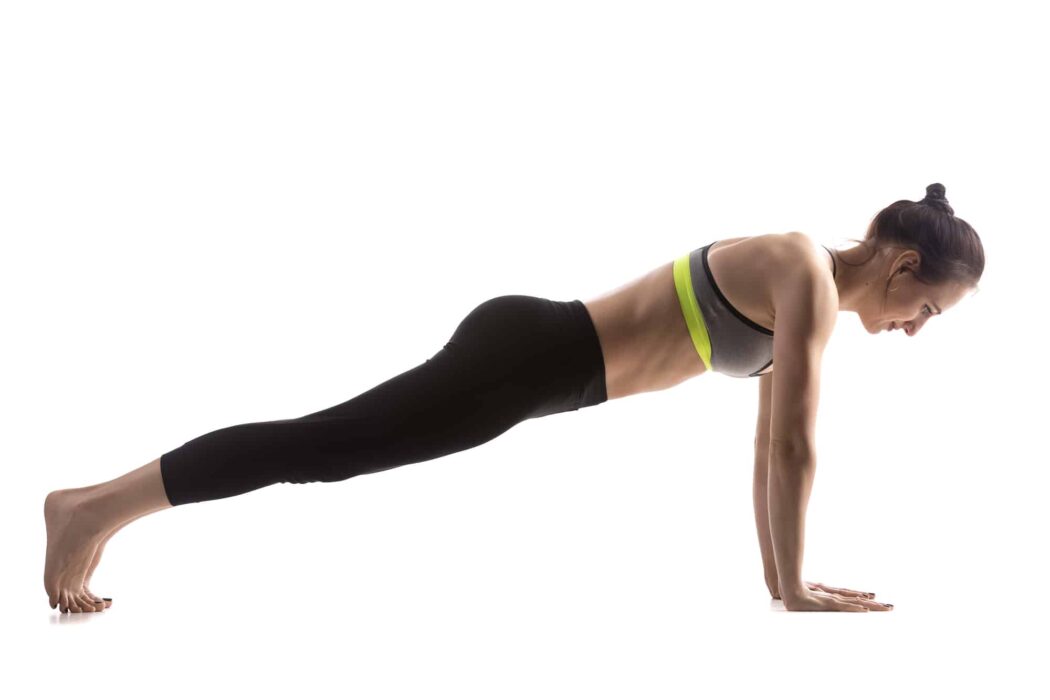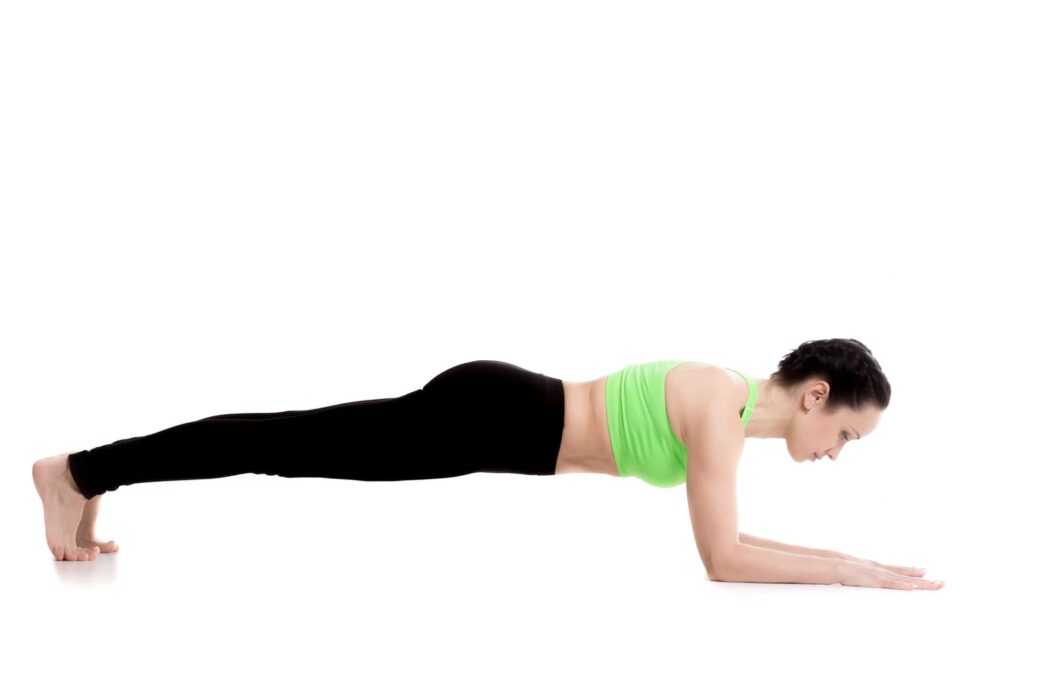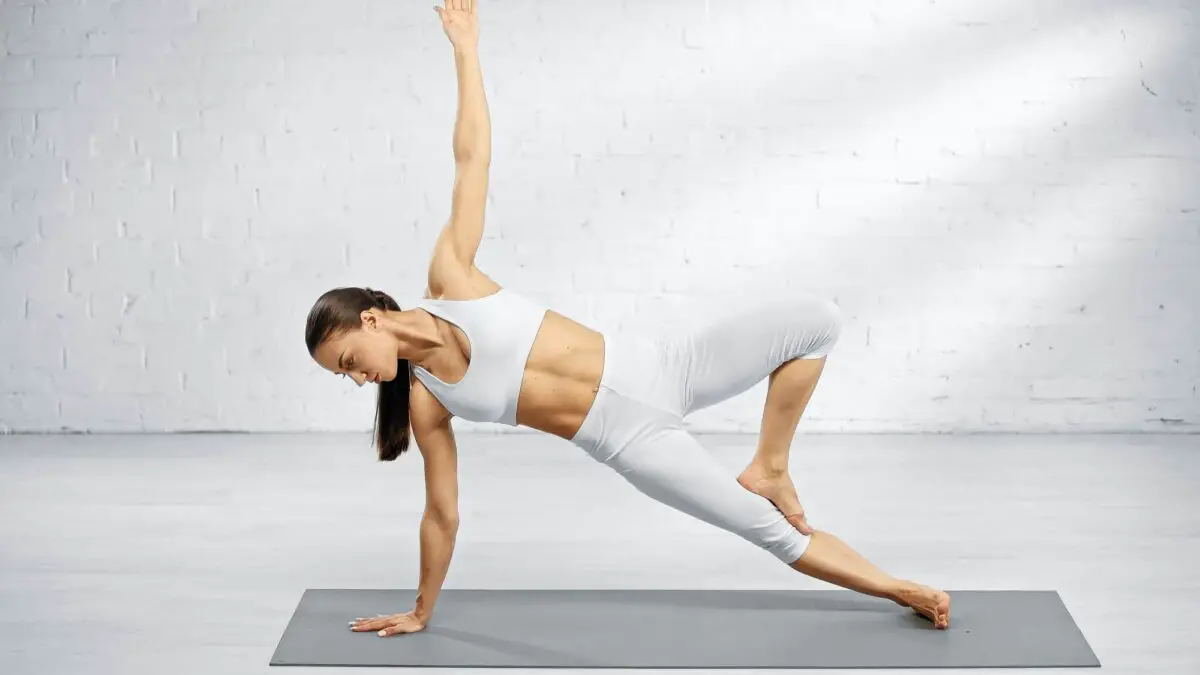
फलकासन
Phalakasana /fal-ack-AHS-anna/ = phalaka : board or bench
Goals: Plank is a foundation pose to get ready for arm balances and stability
The first pose you will be doing as a beginner. It is an essential core strength-building pose that prepares your body for more challenging asanas such as Chaturanga or inversions.
How to Get Into It
- Start on all fours. Palms grounded on the mat right under the shoulders, belly drawn in and up, the neck is relaxed and in line with the floor.
- Extend right and then left leg back and get your body in a high push-up position.
- Engage your thighs, straighten your legs by engaging quads. Your knees are facing towards the floor.
- Lengthen the neck and draw your shoulders blades away from the ears. Open your chest by pulling shoulder blades together a bit.
- Push the mat from you and make sure your body forms a straight line from your head crown to heels.
- Hold the position for 5-10 breathe cycles and increase the time in plank gradually.
Palms. Note that palm alignment is an essential thing for all handstands. Teach your palms to dive into handstands correctly from the very beginning. So, before going into plank, ensure your palms are properly planted on the mat:
Spread your fingers wide apart, thumbs in line with each other, and your middle fingers are parallel.
The middle palm line is appropriately pressed to the floor, and the pointing finger is rooted to the mat to distribute the weight of the body evenly on the outer and inner sides of the palm.
Bridge Pose (Setu Bandha Sarvangasana)
Benefits
- Strengthens all groups of core muscles, including deep ones that stabilize the core, hips, and legs
- Improves metabolism thanks to toning belly muscles that hold internal organs in place and allow them to function properly
- Prepares shoulders, palms, and wrist for complicated arm balances
- Relieves back pain, improves overall coordination and posture
- It teaches you to focus and withstand the difficulty that comes when your hands start to shake. This skill you can use off the mat as well
Modifications
Beginners: To make it easier, drop your knees on the mat and concentrate on pushing the mat with your arms, engaging abs, and pressing your belly button up.
Pro: As your strength grows, use plank variations (side plank or upward plank) or incorporate these in more complicated sequences as transitions between asanas.

Increase the duration of the hold if you are up for a challenge in the Plank pose.
Precautions
- Don’t practice this posture if you have Carpal tunnel syndrome.
- If you feel pain in your wrists, place your forearms on the floor instead.

Common Mistakes
Holding the breath
At first, this pose may seem so complicated that you concentrate so much on the effort to hold it and stop breathing. That’s not a good idea. Try to keep the breathing rhythm smooth.
Excessive sagging in the lower back
Weak abdomen muscles cause this common mistake. To avoid this, keep your attention on driving your belly button towards the spine to support your lower back from that point. Also, tuck your tailbone to stretch the lower back muscles and take down the tension from this area.
